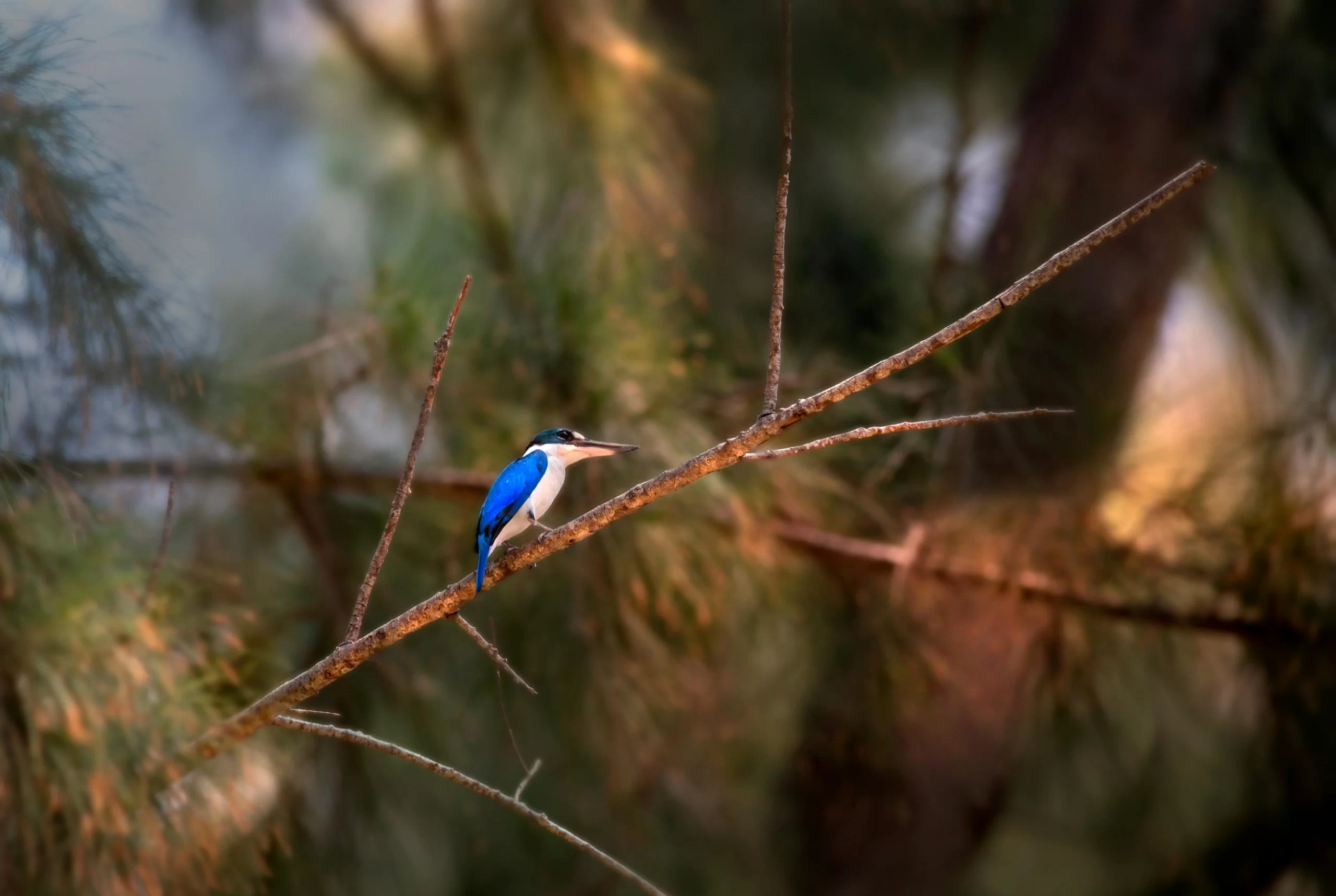Birds in the Philippines are positively remarkable, as the nation is home to many beautiful birds – many of which are endemic to the Philippines. To date, nearly 700 bird species have been observed in the country.
Although the amazing array of Philippine birds cannot be denied, it can be difficult to get to know these creatures without visiting the country. Not to worry – I have created just the perfect resource to help you.
In this guide to the different types of birds in the Philippines, I will discuss both common birds and some endemic species that can be pursued. Additionally, I have included photos of each species to help you master these birds. Let’s get started!
Table of Contents
11 Common Birds In The Philippines
Although there are plenty of rare birds in the Philippines for birders to pursue, anyone who visits these incredible islands will also get to take in dozens of regularly occurring species. This list including common types of birds in the Philippines will demonstrate to birders all of the species that they can easily tick off their Philippines life list. Let’s look at the 11 most common birds in the Philippines!
Eurasian Tree Sparrow
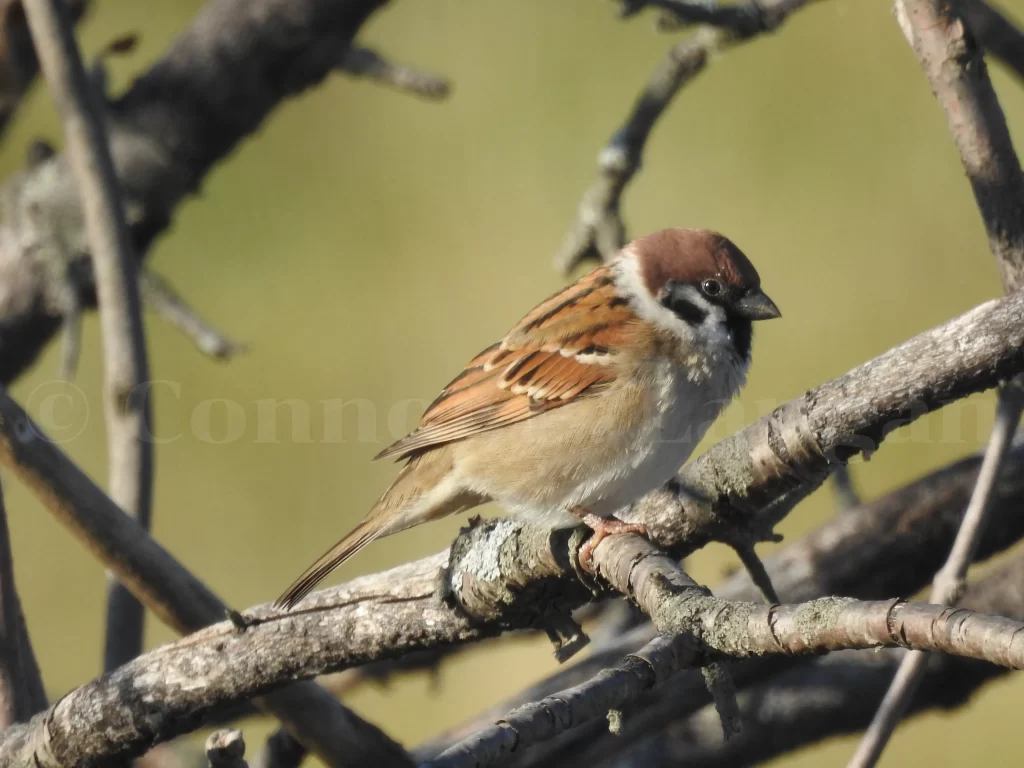
Eurasian Tree Sparrows are a non-native species in the Philippines, but they have nonetheless become the most common bird in the Philippines as per eBird data in the Philippines. In fact, Eurasian Tree Sparrows are observed on 47.02% of all checklists within the Philippines.
These sparrows in the Philippines have become abundant local birds after their introduction in the early 1900s. It is not known if these exotic birds in the Philippines were intentionally introduced or not, but it seems likely that the population may have been founded by birds who stowed away on ships. Birds within the country have been shown to have ancestry that traces back to both Japanese and Indonesian populations.
These Philippine birds have adapted quite well to areas dominated by humans. Therefore, Eurasian Tree Sparrows thrive in cities and towns throughout the Philippines. Look for these sparrows in the Philippines in parks, city tree plantings, or in groups along buildings.
Yellow-vented Bulbul
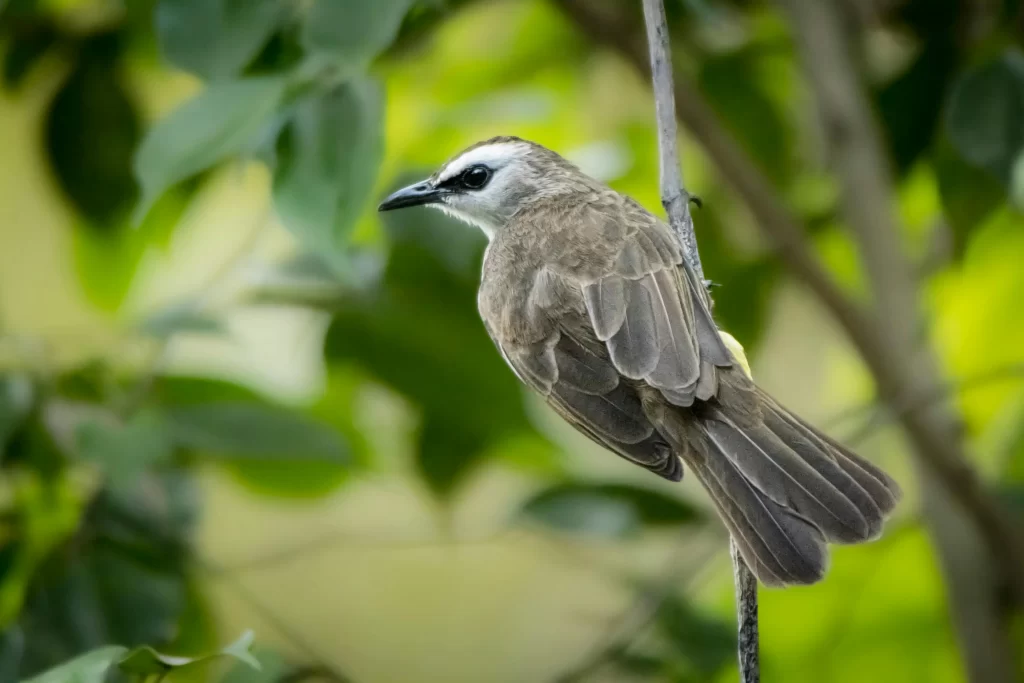
Yellow-vented Bulbuls are a monomorphic Philippines bird that is the most abundant of the native birds in the Philippines. They are subtle with their unmarked plumage, pale undersides, and brown backs. However, the namesake yellow “vent” gives them a splash of color.
These birds of the Philippines can be observed in the entirety of the country throughout the year. They are creatures of semi-open habitats, so look for them in communities of young trees or shrubs, regenerative areas after clear-cuts, or riparian habitats with a young vegetative community.
Yellow-vented Bulbuls are dietary generalists, eating various fruits, seeds, and insects. You may hear their musical, twittering songs proclaimed from their preferred habitats. These common birds in the Philippines are observed on 45.89% of eBird checklists in this country.
Brown Shrike
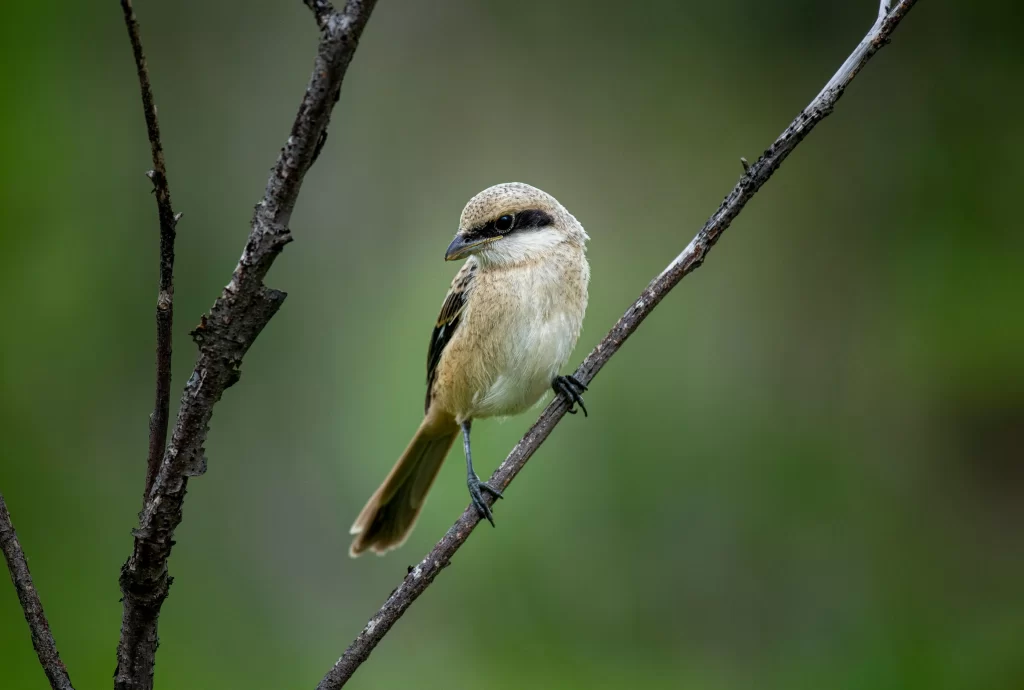
Brown Shrikes are among the most common birds in the Philippines even though they are only found here during winters. This is a testament to their prominence when they are present here, as 34.35% of checklists contain an observation of this Filipino bird.
Most of these brown birds in the Philippines leave the country by April and return by October. They travel north to breed in China, Russia, Japan, Korea, and Mongolia. Brown Shrikes have a habit of perching in open, obvious locations, making them rather easy to detect.
Plantations, areas with young trees and shrubs, and other semi-open areas are optimal habitats for this Philippines bird. Brown Shrikes prey mainly on bugs, but they also consume vertebrates such as small birds, amphibians, and small mammals.
Collared Kingfisher
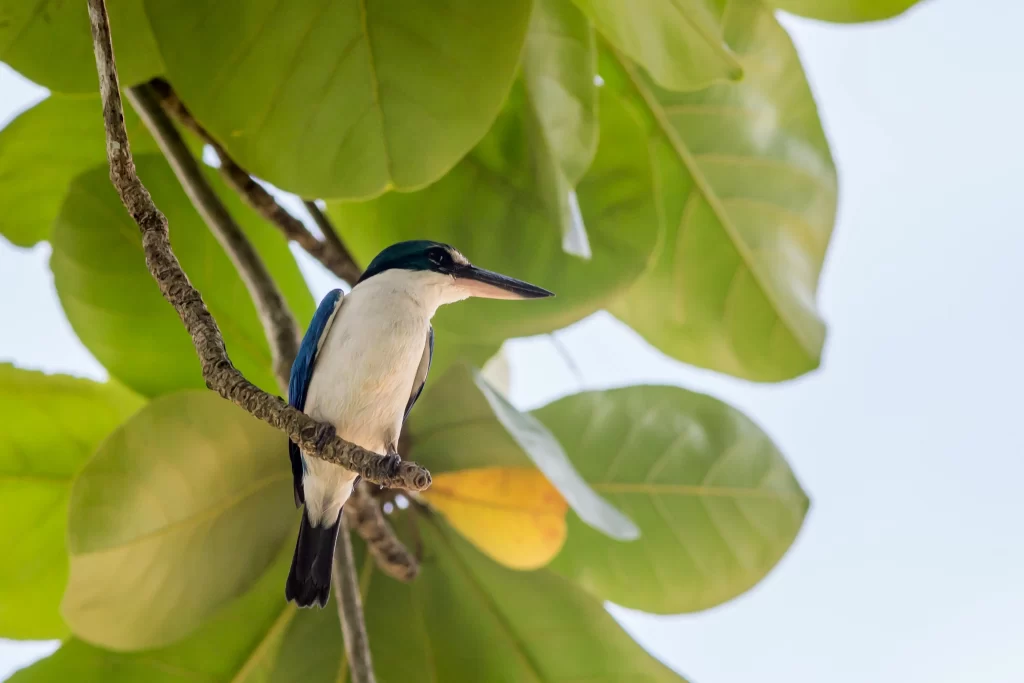
These gorgeous blue, white, and green birds in the Philippines are a treat for birders to observe. Fortunately, they are easy to find here, as they are reported on 32.5% of eBird checklists.
Collared Kingfishers have hefty bills that they use to subdue prey such as fish, insects, and small vertebrates. They are present in the Philippines throughout the year, and you may hear their high-pitched calls that are somewhat reminiscent of those uttered by small falcons.
Like other kingfishers, they are found in aquatic habitats such as marshes, mangroves forests, and lagoons. However, these Philippine birds are not limited to such ecosystems, as they may also be found in open grasslands or rice paddies.
Zebra Dove
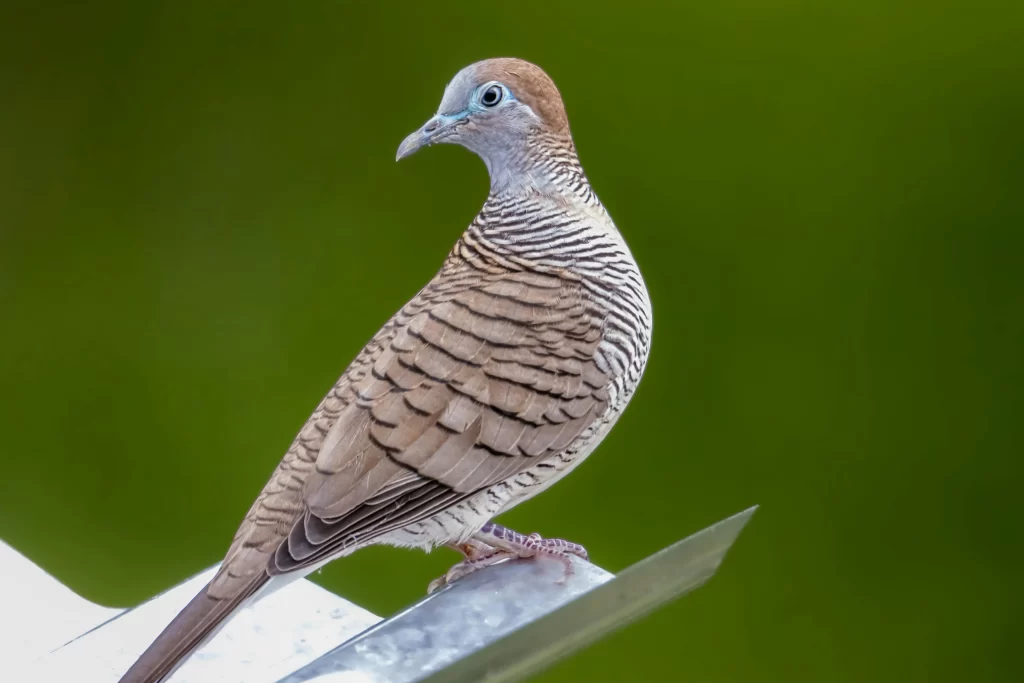
Zebra Doves are present year-round throughout most of the Philippines, however, they are absent from Samar Island. Nevertheless, they are the fifth-most commonly observed Philippines bird, with 30.97% of eBird checklists containing reports of this species.
The sexes of this species are monomorphic, with both males and females having fine black and white zebra stripes around their necks and chests. Their “kroo-bah-boo-boo” songs are familiar to many Filipinos.
Zebra Doves favor semi-open habitats with adjacent tree or shrub cover that can be used to avoid predators. Therefore, gardens, backyards, and towns are popular areas to find these Philippines birds. They may feed on bird seeds underneath bird feeders that are placed around properties.
Garden Sunbird
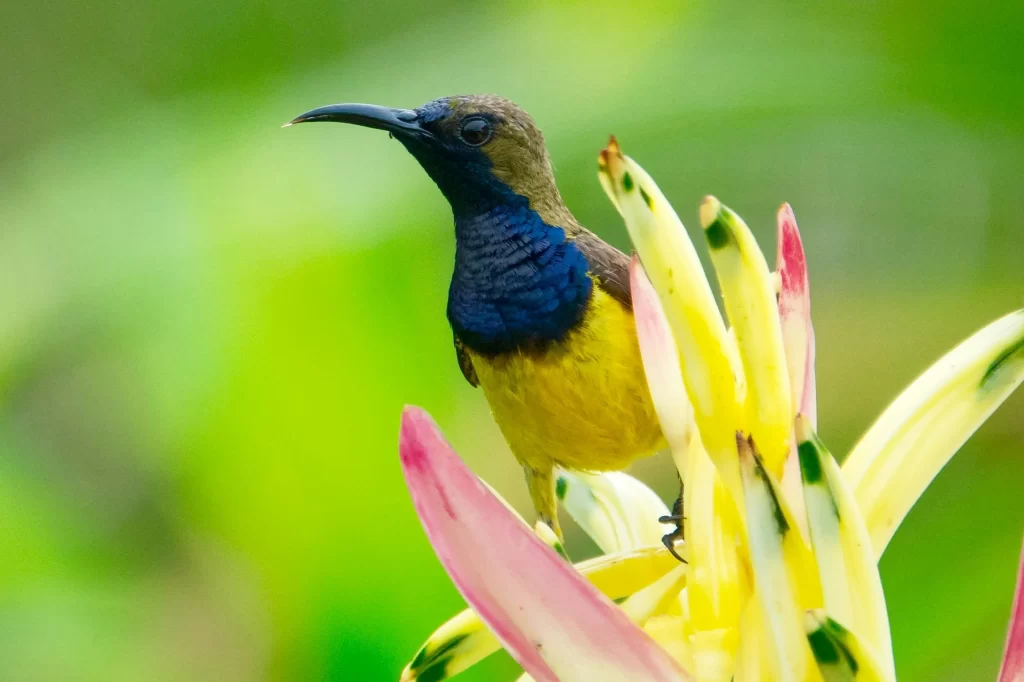
Garden Sunbirds are the most common endemic birds in the Philippines. These sexually dimorphic songbirds are stunning, being perhaps the most dazzling of all the small birds in the Philippines. Indeed, both sexes have lemon-yellow undersides and dark green backs. Males also have beautiful purple feathers on their throats and chests.
These yellow birds in the Philippines are detected on 27.18% of eBird checklists in the nation, and they’re present on all of the islands within the country. Listen for their thin “swee-swee-swee” calls if you’re struggling to find this Philippine bird.
Garden Sunbirds are appropriately named, as they are–indeed–found in gardens. Additionally, they frequent parks, forest edges, and woodlots. These common birds in the Philippines enjoy foraging in tree cover but are not typically found within dense forests.
Philippine Pied-Fantail
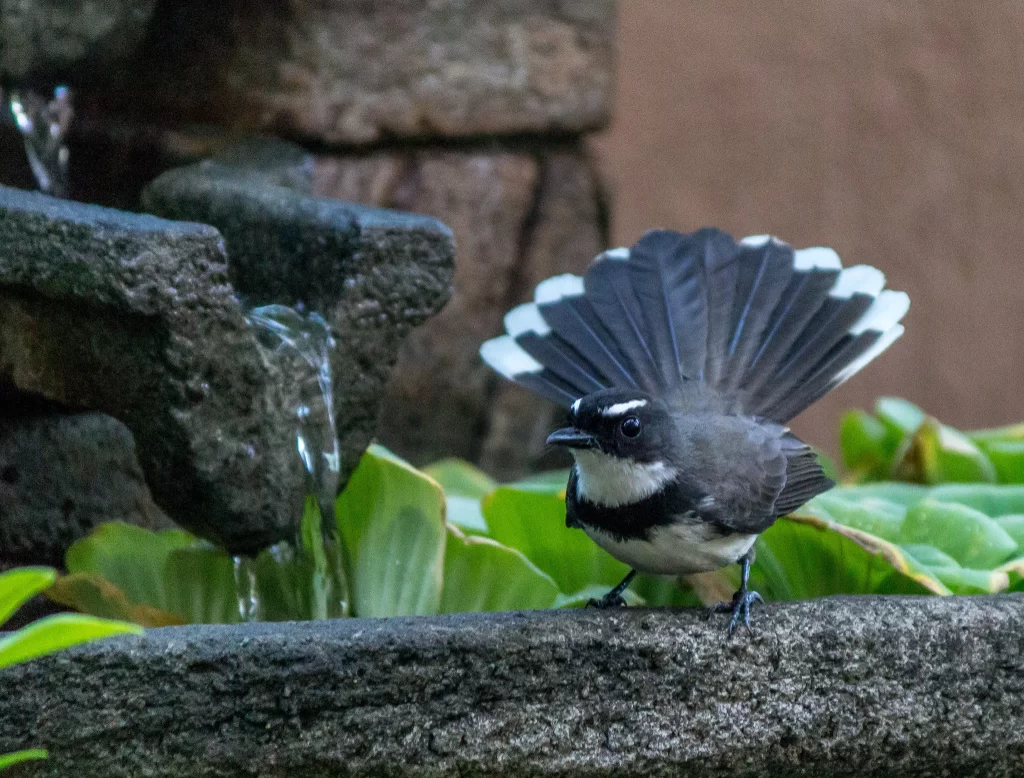
Image attribution: “Philippine Pied Fantail, taken in my garden” by . Ray in Manila is licensed under CC BY 2.0
Philippine Pied-Fantails are another of the native birds in the Philippines found with good regularity, as 25.67% of eBird checklists report them. These black, gray, and white birds of the Philippines are not the prettiest, but they are handsome nonetheless with their intricate patterns.
Philippine-Pied fantails are present year-round. They are among the most active kinds of Philippine birds, as they are constantly on the move in the hunt for insects.
Open woodlands are optimal habitats for those hoping to observe these birds of the Philippines. Mangroves, parks, gardens, forest edges, and similar habitats will yield good results. They sing subtle, descending calls, so it can be difficult to detect one aurally.
Pacific Swallow
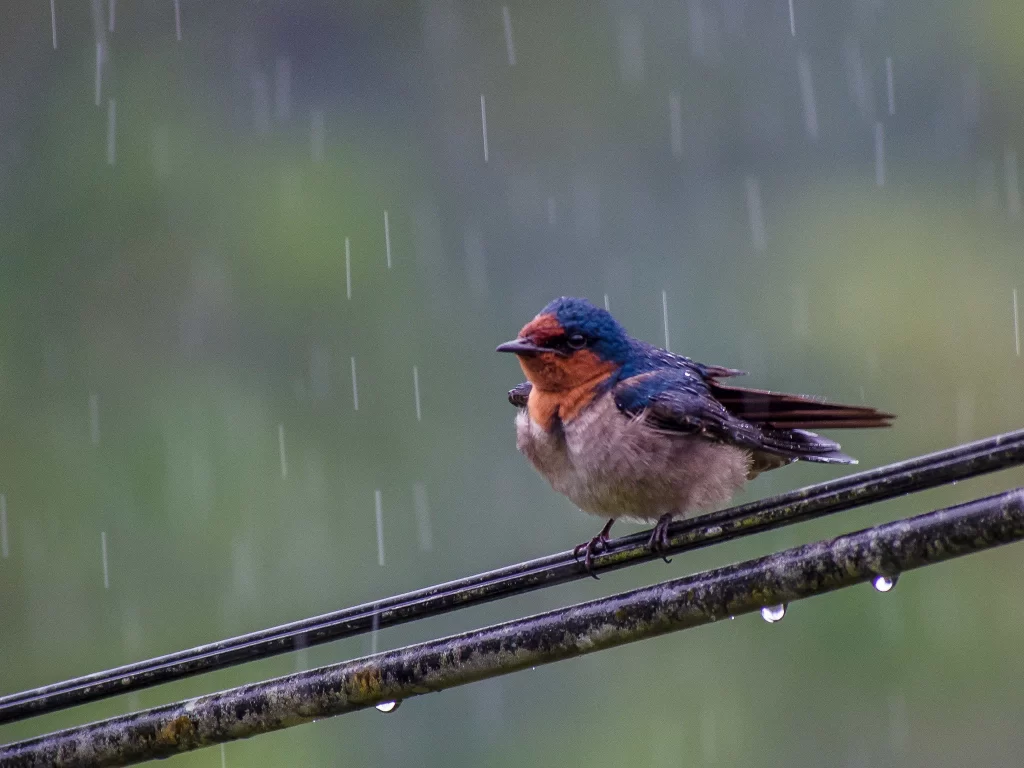
Image attribution: “Pacific Swallow in the Rain” by Mike Prince is licensed under CC BY 2.0
Pacific Swallows look very similar to Barn Swallows – a species that is common in the winter and not as common in the summers. However, when you see these Philippine birds in flight, note that Pacific Swallows do not have tails that are as deeply forked compared to Barn Swallows.
These types of birds in the Philippines with orange throats and blue backs take to the skies in good numbers by mid-morning as insects become increasingly active. However, Pacific Swallows often take breaks in the afternoon as they attempt to cool off and seek refuge from the intense heat and humidity that often covers the Philippines.
Pacific Swallows often nest near humans, as such areas offer clearings and occasionally bring good nesting opportunities. This Filipino bird may forage over waterways or forests, but they do not fly into the interior of such habitats. Pacific Swallows are observed on 25.05% of eBird checklists, making them among the most common birds in the Philippines.
Little Egret
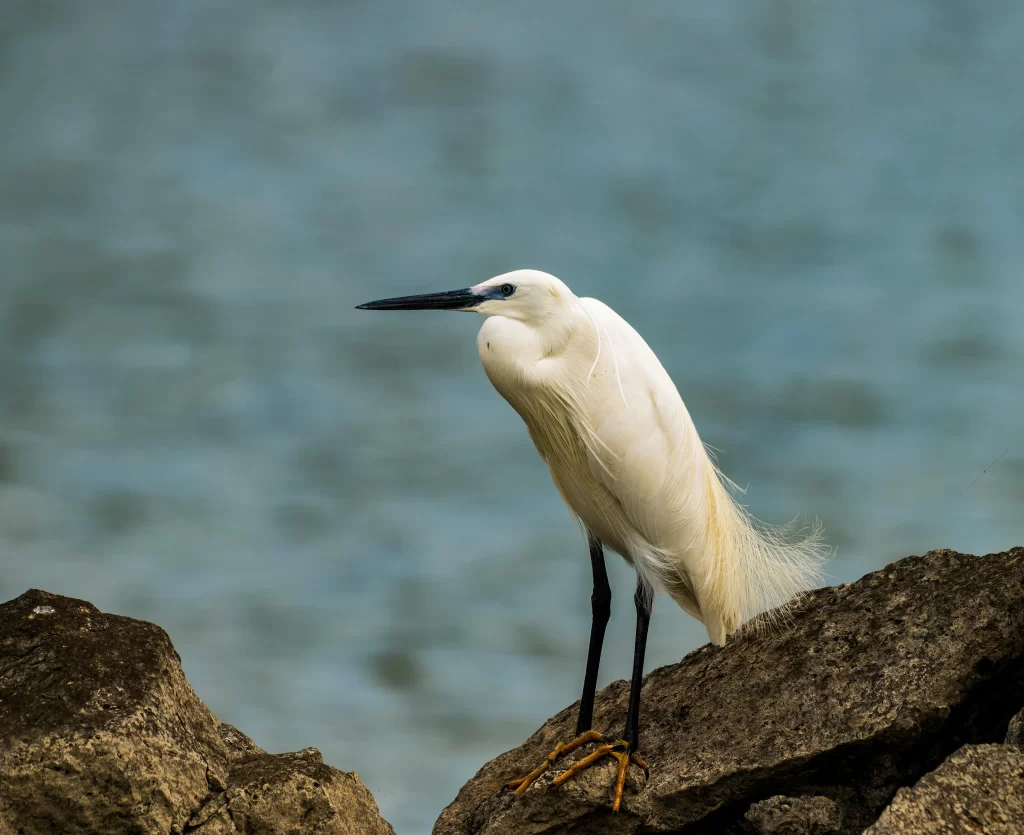
Little Egrets are some of the most common of the big birds in the Philippines. Their presence is usually quite obvious to detect with their white plumage and olive-colored feet, and they are thus observed on 24.46% of Philippines eBird checklists.
Little Egrets are present year-round in this country. Here, these Philippine birds can be readily observed in a variety of wetland habitats. Marshes, mangroves, rivers, lakes, and more may all host hungry Little Egrets that are searching for fish and small vertebrates.
Little Egrets are quite social, as they associate with both conspecifics and other types of birds in the Philippines that are forage in aquatic habitats. In addition to aquatic habitats, Little Egrets may be found in pastures, rice paddies, and other open areas that support populations of prey.
Large-billed Crow
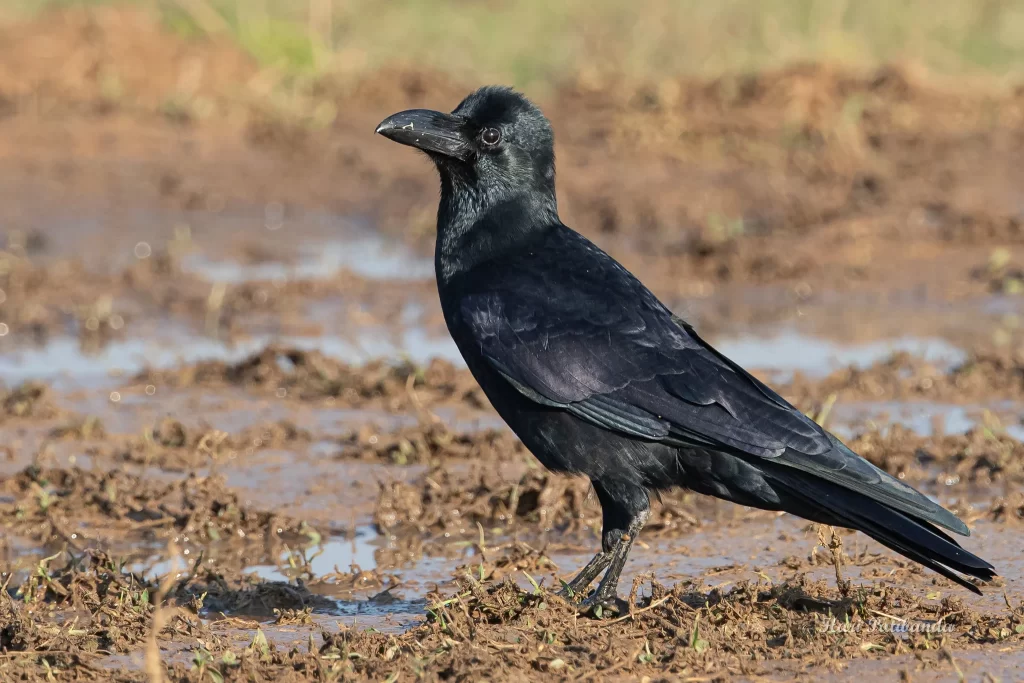
Image attribution: “A Large Billed Crow looking for insects in the ground” by Hari K Patibanda is licensed under CC BY 2.0
Large-billed Crows are the most common corvids in the Philippines, being detected on 22.39% of eBird checklists. They are found on all of the islands of this nation, and they owe their success to their impressive adaptability.
The diets of these Philippines birds will impress most people, as they are extremely versatile. For instance, fruits, seeds, carrion, invertebrates, and a variety of vertebrates—even other birds–may be on the menu! In addition to simply eating dead animals, Large-billed Crows will regularly go on the hunt and take down their own meals.
These black birds in the Philippines can be found in an array of different locations. Towns, villages, parks, backyards, wetlands, and semi-open woodlands will all host Large-billed Crows. The Philippines represent the eastern edge of their range which extends west to Kerala, India.
Barn Swallow
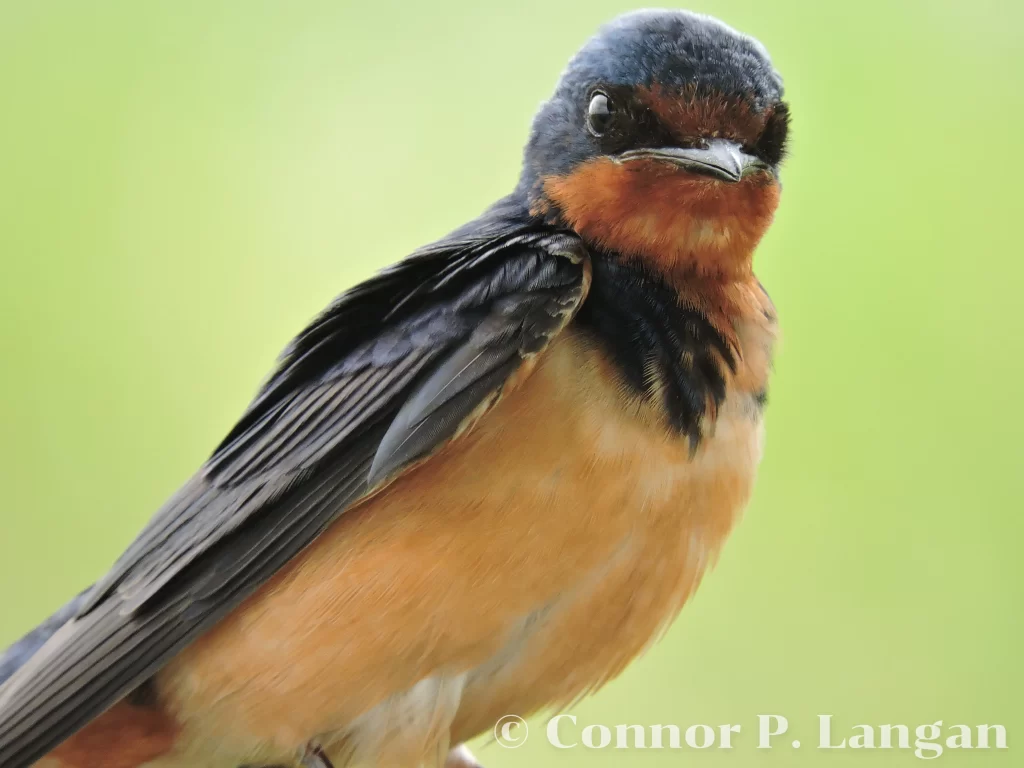
As discussed earlier, Barn Swallows are similar in their appearance to Pacific Swallows, but their tails are more deeply forked and they don’t have as much orange on their faces. Although not as common as Pacific Swallows, these birds of the Philippines are still quite abundant, being found on 21.6% of eBird checklists.
The diets of Barn Swallows cause many to enjoy their presence, as they consume vast amounts of insects. Males and females are sexually monomorphic and may be found year-round, but they are not as widely reported in June and July compared to other months.
Barn Swallows are not the most common birds in the Philippines, as they are regularly found near humans. In fact, they commonly build their nests on human structures. Barn Swallows are especially numerous near aquatic habitats and semi-open areas where they can capture insects uninhibited.
5 Unbelievable Endemic Birds In The Philippines
I previously mentioned that the Philippines is home to tremendous avian diversity, but did you know that there are more than 235 species of endemic Philippines birds? It’s true! The amount of distinct species that are present within the Philippines is absolutely astonishing, as nearly half of all regularly occurring species are endemic.
Let’s take a look at some examples of endemic birds in the Philippines!
Philippine Eagle
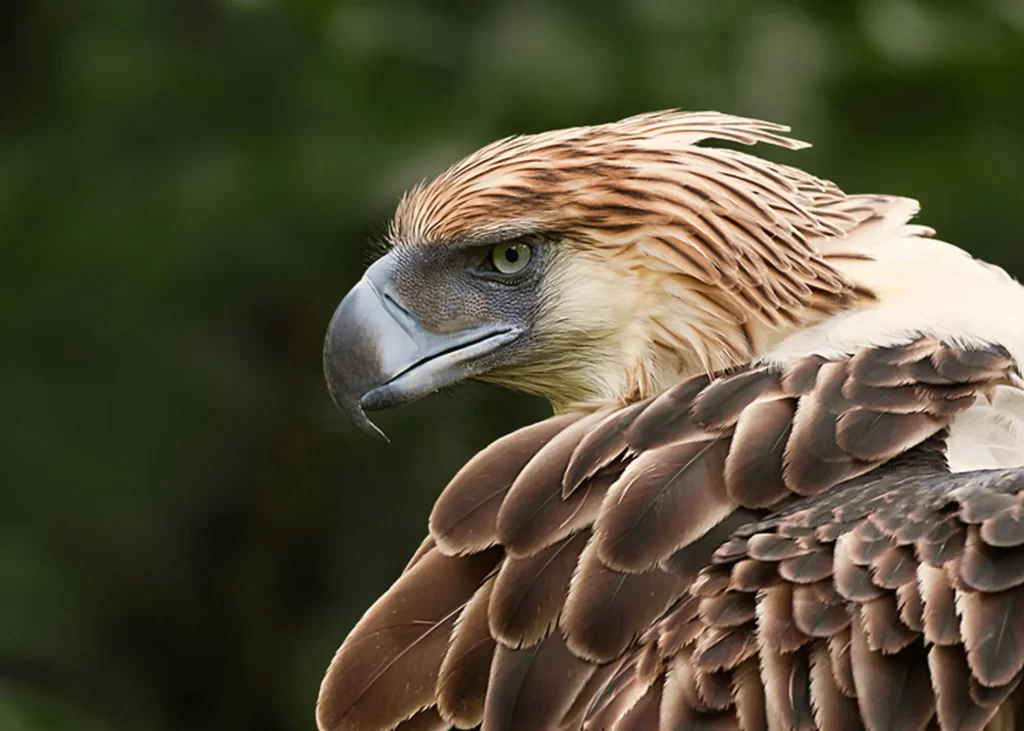
Image attribution: “su463” by Sinisa Djordje Majetic is licensed under CC BY-SA 2.0
A list covering the kinds of birds in the Philippines would not be complete without the Philippine Eagle – the country’s national bird. Naturally, these Philippine birds of prey are at the top of any birder’s wish list when they visit the nation. Unfortunately, Philippine Eagles are currently considered to be critically endangered.
Nevertheless, these impressive raptors are still observed on 0.53% of all eBird checklists submitted to the Philippines. These endangered birds in the Philippines have rebounded to a degree in recent years, but they still have a long road to recovery.
The primary reason that Philippine Eagles have declined is due to the destruction of their forested homes. These rare birds in the Philippines require large, undisturbed tracts of forest, and this habitat has been destroyed in most of the country.
Giant Scops-Owl
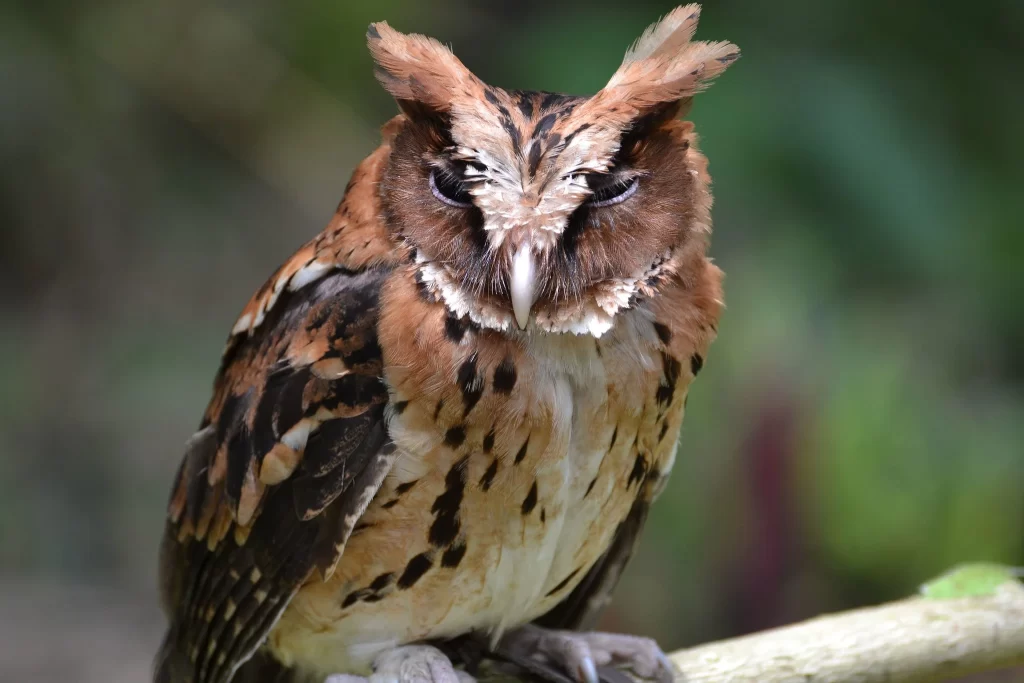
Out of dozens of scops-owl species, the Giant Scops-Owl is the largest in the world. These Philippine owls are a sight to behold in tracts of contiguous forest. Fortunately, these Philippine birds are not too difficult to find, being observed on 1.01% of checklists.
Giant Scops-Owls rarely come out during the day, so it is best to listen for this Filipino bird at night. Their call is a hoarse-sounding caw, and it can readily be heard from forested locations in Mindanao.
Mindanao is the stronghold for Giant Scops-Owls, but these big birds in the Philippines have also been reported on Samar Island and Siargao Island. These birds in the rainforest require sizable tracts of forest for foraging and nesting. They have been listed as vulnerable due to their rather restricted range and the fragility of their forest ecosystems.
Image attribution: “Giant scops owl” by shankar s. is licensed under CC BY 2.0.
Visayan Hornbill
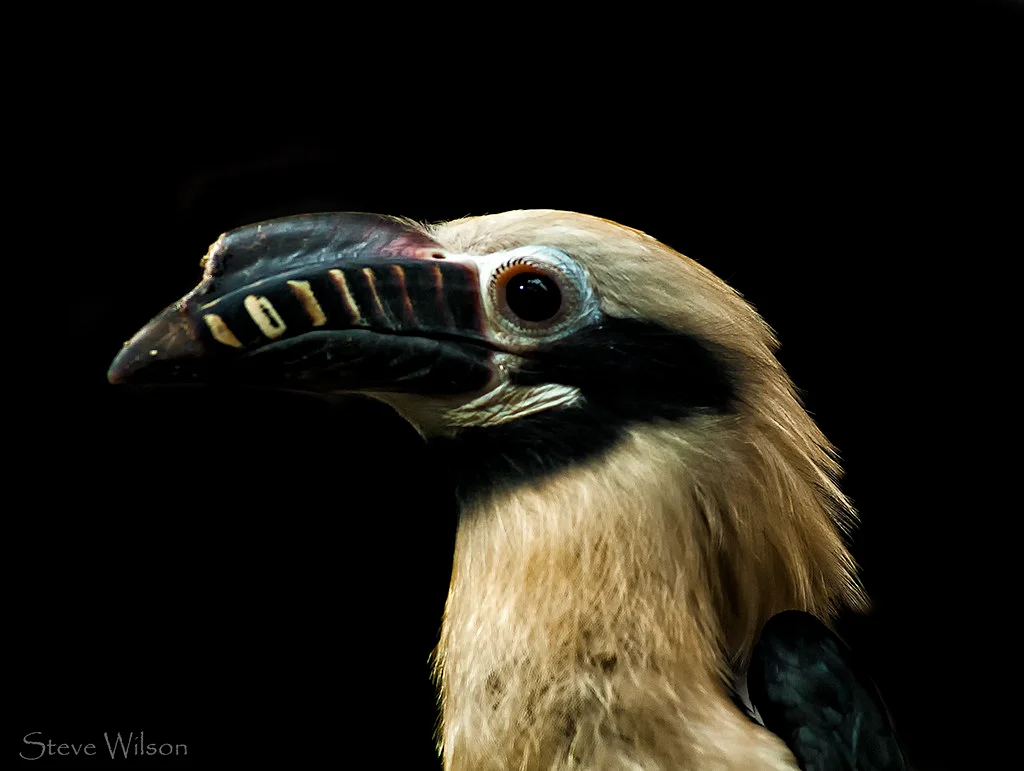
Image attribution: “Visayan Tarictic Hornbill” by Steve Wilson – over 10 million views Thanks !! is licensed under CC BY 2.0
Although several endemic hornbills can be found in the Philippines, the Visayan Hornbill is perhaps the most captivating. They are large Philippine birds, but rather small compared to their hornbill counterparts. Visayan Hornbills have been listed as endangered by the IUCN.
Despite being endangered birds in the Philippines, they are observed on 0.554% of eBird checklists. Males and females are sexually dimorphic, with males having white undersides and females having black.
Visayan Hornbills are found in large expanses of forest on Masbate Island, Panay, and Negros. They readily feed on a variety of fruits and seeds, and their calls—which sound like dry dog squeaky toys—can be heard by those who keep their ears open.
Spotted Kingfisher
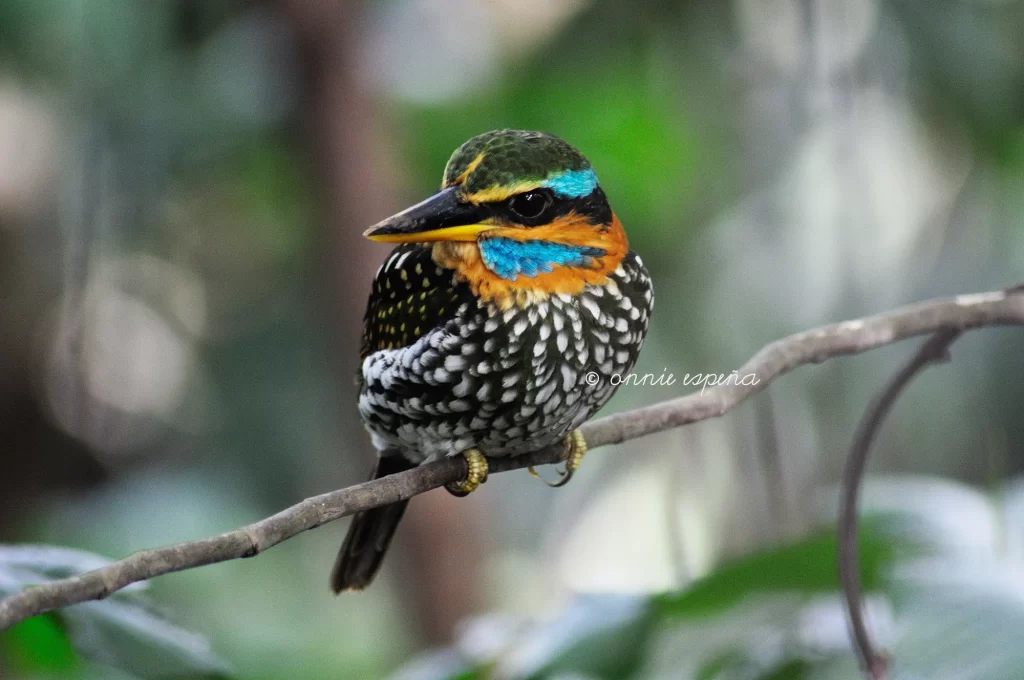
Image attribution: “Spotted-Wood Kingfisher” by —–^_^—— is licensed under CC BY 2.0
Spotted Kingfishers are dazzling, colorful birds in the Philippines. The sexes are dimorphic from one another, with males having orange throats and blue on their faces and females having green faces. No matter which sex you observe, it will certainly be gorgeous.
Spotted Kingfishers are rather easy to find in the Philippines, but you’ll have to visit the right islands. Their stronghold is in Luzon, but they can also be found on Panay and Negros. Overall, Spotted Kingfishers are observed on 2.61% of Philippines checklists.
Spotted Kingfishers thrive in aquatic areas within forests. A lazy, winding stream or river is optimal habitat for them. If you listen closely, you’ll be able to detect their two-syllable whistling songs.
Ashy Thrush
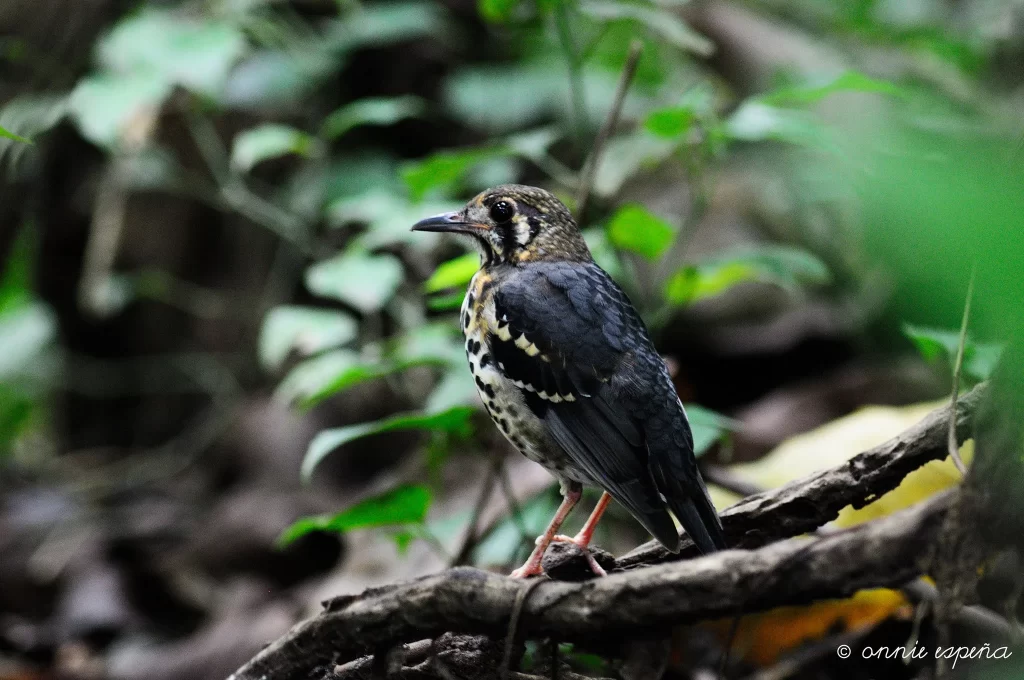
Image attribution: “Ashy-Ground Thrush” by —–^_^—— is licensed under CC BY 2.0
Ashy Thrushes are subtle, handsome endemic birds in the Philippines. They have a delicate appearance, and their population is somewhat fragile – being listed as vulnerable by the IUCN. Ashy Thrushes are observed on 0.8% of Philippine checklists.
Finding an Ashy Thrush can be a challenge, but knowing where to look will give you a decent chance. Be sure to focus your efforts on Luzon and Mindoro, as these are the only islands with populations of these songbirds.
These white, gray, and black birds in the Philippines spend much of their time foraging on the ground as they pick through leaf litter to look for insects. Search for them in sizable tracts of forest.

